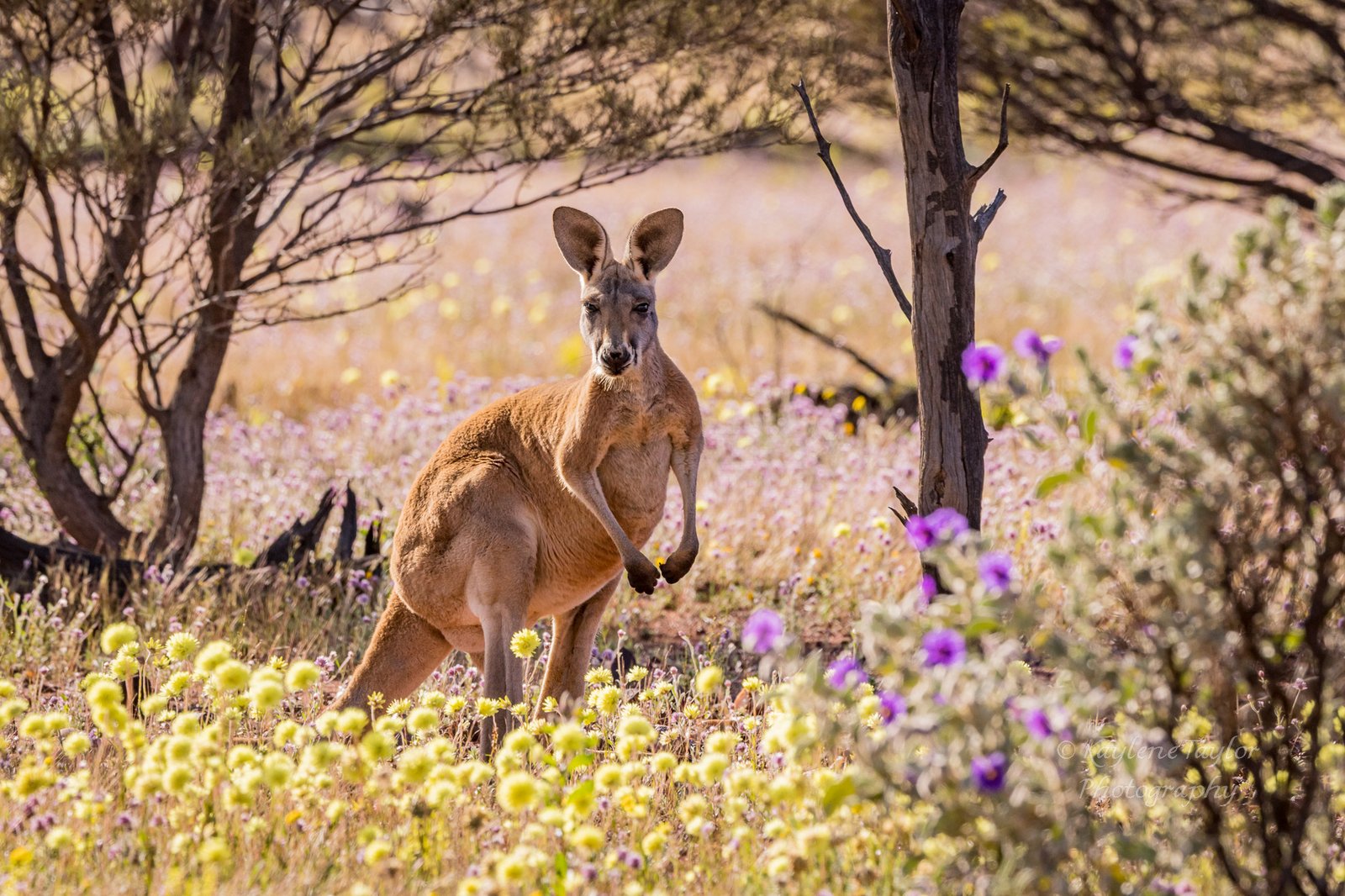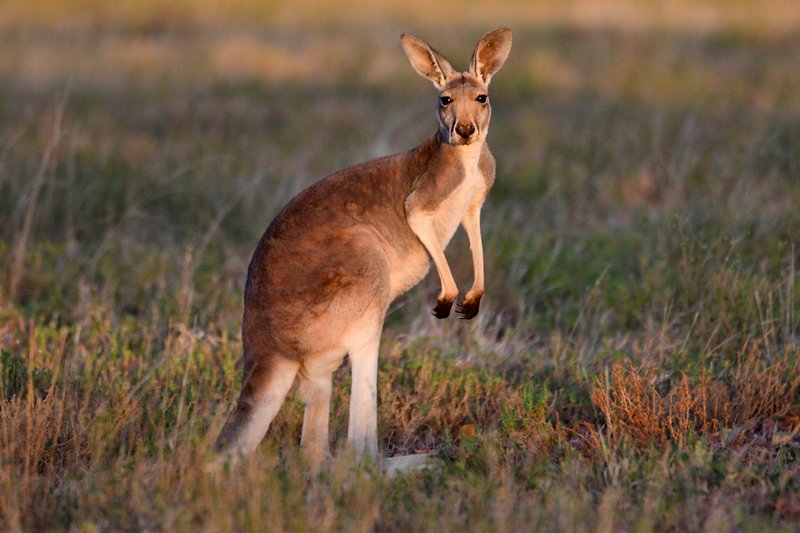Red Kangaroo
The Red Kangaroo is an iconic Australian animal of the arid zone and is the largest living marsupial in the world.
What do Red Kangaroos look like?
Identification
The Red Kangaroo is a large kangaroo with a body length of up to 1.4m and tail up to 1m. Males tend to be orange red in colouring while females are often blue grey. Both males and females are a lighter whitish colour underneath. Red Kangaroos can be distinguished from other species of kangaroos by the black and white patches on their cheeks and the broad white stripe that extends from the corner of the mouth to ear. Male Red Kangaroos are double the body weight of females and can weigh up to 92kg while the females can weigh up to 39kg.

© CC BY-NC 4.0
Where do Red Kangaroos live?
Habitat
The Red Kangaroo prefers sparsely wooded or open plains. They inhabit grassland, shrubland, desert, woodland and open forest, and are most common in open savanna woodland.
Distribution
The Red Kangaroo is found throughout the semi-arid and arid regions of mainland Australia.
Specimen in our collection
View microCT scan of a Red Kangaroo skull (Osphranter rufus) from the Australian Museum Mammalogy Collection (specimen AM M.56033). Learn more about microCT scanning and how it is used by the Australian Museum Research Institute.
What do Red Kangaroos eat?
Feeding and diet
Red Kangaroos are herbivores, primarily grazing on grasses but also eat forbs and leaves of shrubs. The Red Kangaroo has the ability to survive when water is scarce. The herbage and foliage that the Kangaroo eats provides them with their water needs as well as their nutritional requirements. In times of drought, Red Kangaroo populations can suffer as their food supplies diminish. The abundance of food is a determining factor in the Red Kangaroo life cycle.
How do Red Kangaroos mate?
Breeding behaviours
Reproduction is very sensitive to environmental conditions. The Red Kangaroo breeds all year round, however spring and summer tend to be times when most young are born. The females have the unique ability to delay birth of their baby until their previous Joey has left the pouch. This is called embryonic diapause. Females have one baby at a time, which at birth is the size of a jellybean. The infant immediately climbs into its mother's pouch and the gestation period is around 33 days. Until they reach about eight months of age, threatened young kangaroos, called joeys, will quickly dive for the safety of mom's pouch. As they grow, joeys' heads and feet can often be seen hanging out of the pouch. The young Joey will permanently leave the pouch at around 235 days old, but will continue to suckle until it reaches 12 months of age.

© CC BY-NC 4.0
Support the Australian Museum
Your donation supports the exceptional work of our inspiring scientists, explorers and educators as they help to protect Australia’s vital natural and cultural heritage for generations to come.
Donate now

